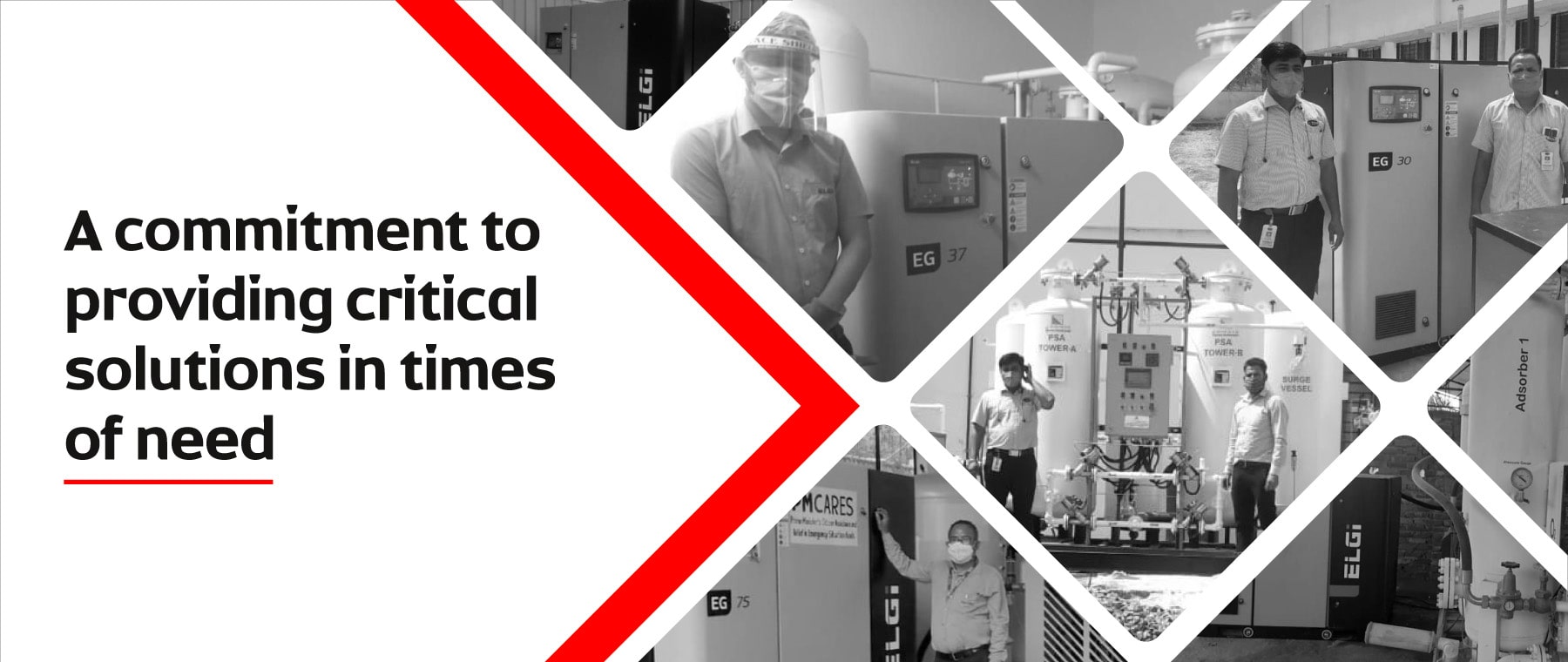Tư vấn - Srew compressorỨNG DỤNG MÁY NÉN KHÍ CHO NHÀ MÁY SẢN XUẤT OXY

In India, the second wave of the COVID-19 pandemic had brought with it an unprecedented set of challenges to the healthcare sector.
From constraints in providing adequate treatment, to a lack of supply of medicines- Hospitals across the country were reeling from the impact of a cataclysmic crisis. The biggest challenge that the COVID-19 pandemic had brought with it, is the lack of oxygen supply to patients who need utmost critical care. More than the lack of oxygen cylinders, hospitals faced difficulty in transportation due to logistical constraints.
This is why, as a timely solution to mitigate the severe crisis, the Defence Research and Development Organisation (DRDO) had committed to set up PSA oxygen plants, which would resolve the issue of the supply constraints.
What are PSA oxygen plants and how do they function?
The air around us is composed of 78% Nitrogen, 21% Oxygen and 0.9%of Argon among trace elements of other gases. To separate oxygen from the other components of air, oxygen plants play an instrumental role.
To put it simply, oxygen plants are systems, which are designed to produce oxygen by separating it from other components of air.
In PSA oxygen plants, a technique called 'adsorption' is used to make this separation. This relies on the phenomenon that each gas is attracted to different solid surfaces in varying degrees.
For supplying medical oxygen, PSA oxygen plants compress the atmospheric air with an air compressor. This compressed air is then pushed under pressure through a vessel, which has a bed of zeolite, a material to which other air components have a higher degree of attraction towards, as compared to oxygen. The gas, which then comes out of the vessel, is oxygen viable for utilization on patients.

The key advantages of PSA Oxygen Plant in critical times
In the current scenario, PSA Oxygen Plants provide essential assistance in the following ways:
Transportation
One of the biggest challenges faced by healthcare centers is transporting oxygen from one place to another. In situations where patients need critical air supply, if delivery of the oxygen cylinders is delayed, it could be too little, too late. However, with an in-house oxygen plant, healthcare institutions can save on the transportation time and take care of the essential supply of oxygen, as and when required.
Safety
Due to their high potential for inflammability, taking care of oxygen cylinders can also be a safety issue and can be risky for healthcare centers. In comparison to that, oxygen plants are a safer solution as the risk of high-pressure inflammability is much lower.
Sustainability
With ambient air as its raw material, PSA Oxygen Plants are a sustainable option for healthcare centers and can be set up in a short span of time.
Savings
Apart from the initial set-up cost, the PSA Oxygen Plants are a cost-effective option as they ensure higher savings on monthly medical oxygen bills, unlike oxygen cylinders which are costlier.
Conclusion
At ELGi, we're always committed to aid the healthcare sector at every step of the way. Currently, in addition to ensuring smooth flow of services to our customers across the globe, we are providing assistance to supply air compressors for such oxygen plants, so that critical patients receive timely supply of oxygen. We are working closely with several manufacturers of oxygen plants to ensure on-time delivery and maintenance of the system.
